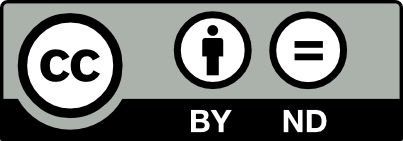Cet article démontre une « nouvelle » famille d’équations fonctionnelles () satisfaites par le dilogarithme de Rogers. Ces équations fonctionnelles reflètent la combinatoire des coordonnées diédrales des espaces de modules de courbes de genres , . Pour , on retrouve la relation de dualité et, pour , la relation à termes du dilogarithme. Dans une seconde partie, on démontre que la famille se réduit à la relation à termes. C’est, à la connaissance de l’auteur, la première fois qu’une famille infinie d’équations fonctionnelles du dilogarithme ayant un nombre croissant de variables ( pour ) se réduit à la relation à termes.
La réduction de cette famille d’équations à la relation de -cycle explique les guillemets de la première phrase.
This paper proves a “new” family of functional equations for Rogers dilogarithm. These equations rely on the combinatorics of dihedral coordinates on moduli spaces of curves of genus , . For we find back the duality relation while gives back the terms relation. It is then proved that the whole family reduces to the terms relation. In the author’s knownledge, it is the first time that an infinite family of functional equations for the dilogarithm with an increasing number of variables ( for ) is reduced to the terms relation.
This reduction explains the quotation marks around “new” at the beginning of this abstract.
Révisé le :
Accepté le :
Publié le :
Mots-clés : Équation fonctionnelle, dilogarithme, espaces de modules, espaces de modules de courbes de genre 0, polylogarithmes
Keywords: functional equations, dilogarithm, polylogarithms, moduli spaces, modulispaces of curves of genus 0
Soudères, Ismael 1
 CC-BY-ND 4.0
CC-BY-ND 4.0
@article{AIF_2018__68_1_151_0,
author = {Soud\`eres, Ismael},
title = {\'Equations fonctionnelles du dilogarithme},
journal = {Annales de l'Institut Fourier},
pages = {151--169},
publisher = {Association des Annales de l{\textquoteright}institut Fourier},
volume = {68},
number = {1},
year = {2018},
doi = {10.5802/aif.3155},
language = {fr},
url = {https://aif.centre-mersenne.org/articles/10.5802/aif.3155/}
}
TY - JOUR AU - Soudères, Ismael TI - Équations fonctionnelles du dilogarithme JO - Annales de l'Institut Fourier PY - 2018 SP - 151 EP - 169 VL - 68 IS - 1 PB - Association des Annales de l’institut Fourier UR - https://aif.centre-mersenne.org/articles/10.5802/aif.3155/ DO - 10.5802/aif.3155 LA - fr ID - AIF_2018__68_1_151_0 ER -
%0 Journal Article %A Soudères, Ismael %T Équations fonctionnelles du dilogarithme %J Annales de l'Institut Fourier %D 2018 %P 151-169 %V 68 %N 1 %I Association des Annales de l’institut Fourier %U https://aif.centre-mersenne.org/articles/10.5802/aif.3155/ %R 10.5802/aif.3155 %G fr %F AIF_2018__68_1_151_0
Soudères, Ismael. Équations fonctionnelles du dilogarithme. Annales de l'Institut Fourier, Tome 68 (2018) no. 1, pp. 151-169. doi : 10.5802/aif.3155. https://aif.centre-mersenne.org/articles/10.5802/aif.3155/
[1] Multiple zeta values and periods of moduli spaces , Ann. Sci. Éc. Norm. Supér., Volume 42 (2009) no. 3, pp. 371-489 | DOI | Zbl
[2] Functional identities for the Rogers dilogarithm associated to cluster -systems, Bull. Lond. Math. Soc., Volume 37 (2005) no. 5, pp. 755-760 | DOI | Zbl
[3] Periodicities of T-systems and Y-systems, dilogarithm identities, and cluster algebras I : type , Publ. Res. Inst. Math. Sci., Volume 49 (2013) no. 1, pp. 1-42 | DOI | Zbl
[4] Periodicities of T-systems and Y-systems, dilogarithm identities, and cluster algebras II : types , , and , Publ. Res. Inst. Math. Sci., Volume 49 (2013) no. 1, pp. 43-85 | DOI | Zbl
[5] On cluster theory and quantum dilogarithm identities, Representations of algebras and related topics (EMS Series of Congress Reports), European Mathematical Society, 2011, pp. 85-116 | DOI | MR | Zbl
[6] Cycle complex over minus points : toward multiple zeta values cycles., 2012 (http://arxiv.org/abs/1210.4653v2)
[7] Algebraic -theory of fields, Proceedings of the International Congress of Mathematicians, Vol. 1 (Berkeley, Calif., 1986) (1987), pp. 222-244 | Zbl
[8] of a field, and the Bloch group, Trudy Mat. Inst. Steklov., Volume 183 (1990), p. 180-199, 229 | Zbl
[9] The basic structure of polylogarithmic functional equations, Structural properties of polylogarithms (Mathematical Surveys and Monographs), Volume 37, American Mathematical Society, 1991, pp. 205-231 | DOI | Zbl
[10] The remarkable dilogarithm, J. Math. Phys. Sci., Volume 22 (1988) no. 1, pp. 131-145 | MR | Zbl
[11] The dilogarithm function in geometry and number theory, Number theory and related topics (Bombay, 1988) (Tata Inst. Fund. Res. Stud. Math.), Volume 12, Tata Institute of Fundamental Research, 1989, pp. 231-249 | Zbl
[12] The dilogarithm function, Frontiers in number theory, physics, and geometry. II, Springer, 2007, pp. 3-65 | DOI | Zbl
Cité par Sources :




